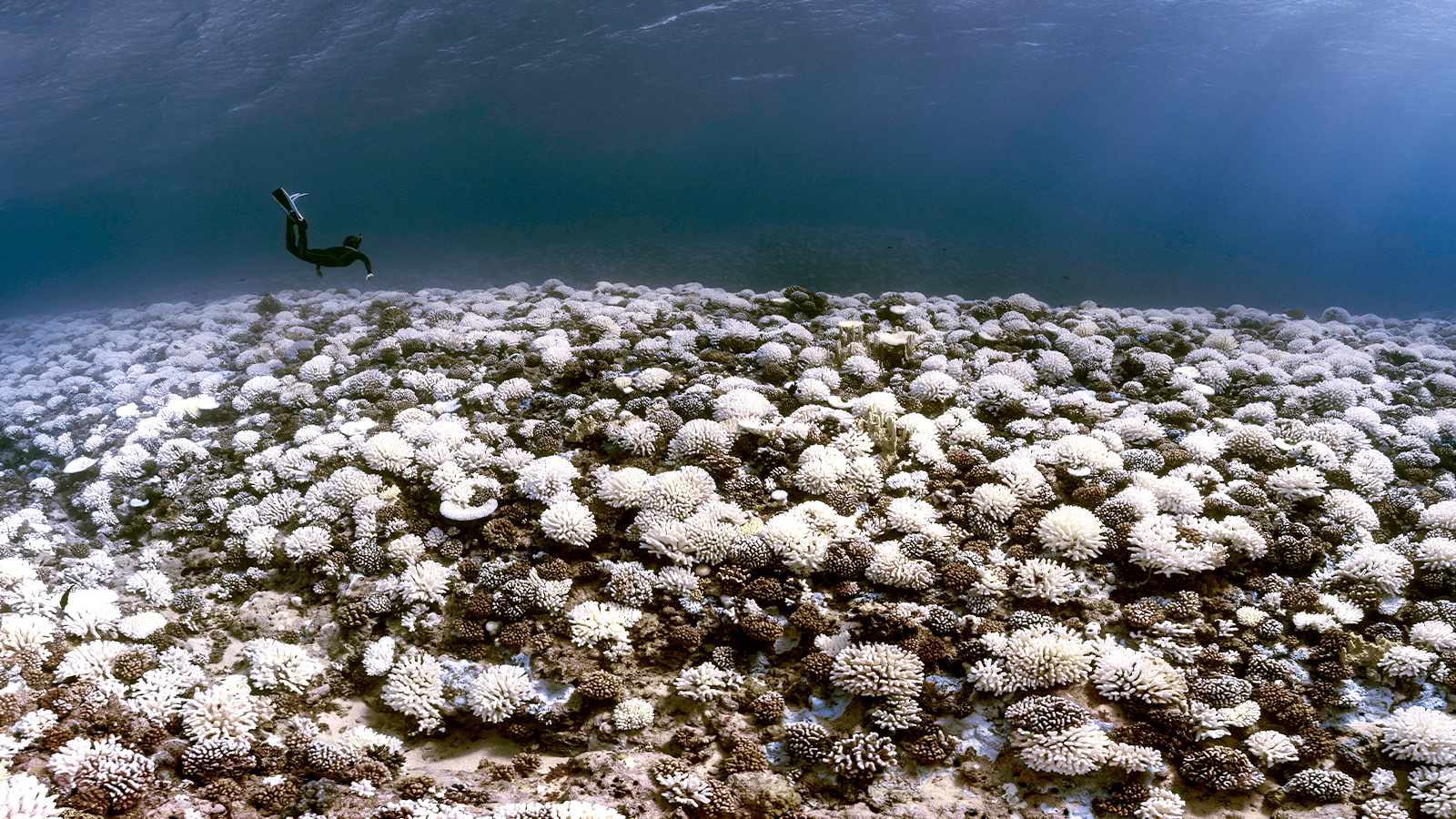
As ocean waters warm, parts of coral reefs that were once technicolor have begun to turn white, endangering ecosystems around the world.
Scientists from the National Oceanic and Atmospheric Administration and the International Coral Reef Initiative announced Monday that the world is undergoing its fourth global coral bleaching event, the second such event in the past decade. According to Derek Manzello, coordinator of NOAA’s Coral Reef Watch program, scientists have documented significant coral bleaching across every major ocean since early last year.
The current bleaching event, caused by prolonged high ocean temperatures, has affected reefs in more than 53 countries and territories and 54 percent of all areas with reefs. Some places, such as the Caribbean, Australia’s Great Barrier Reef and large parts of the South Pacific, began documenting widespread bleaching in early 2023. Now, with recent reports from countries along the Indian Ocean and the South Atlantic confirming that none of the four major ocean basins were left untouched, it is determined that the event is truly global, according to NOAA and the International Coral Reef Initiative.
“Unfortunately, we’re likely to see bleaching events continue to occur, and they’re likely to get worse,” Manzello said. Previous mass bleaching events occurred in 1998, 2010 and between 2014 and 2017. According to Manzello, the current event is likely to engulf more reef areas than ever before.
In February, sea temperatures a record highand since last June each successive month has been the warmest of that month ever recorded. Although a period of ocean cooling, known as La Niña, is expected to bring relief this summer, the amount of bleached coral reefs will increase by about 1 percent per week as high temperatures persist.
Bleaching occurs when corals are stressed by rising ocean temperatures and expel the algae that live in their tissues, causing them to turn white. Corals are invertebrates and rely on the algae as a symbiotic source of food. If temperatures remain high for too long, bleaching can lead to mass coral death. Even in well-protected areas, such as Australia’s Great Barrier Reef, up to half of coral were killed by warming temperatures.
The death of coral not only threatens the health of marine ecosystems, but also the livelihoods and food security of people who depend on them. According to some estimateseconomic activities that rely on healthy coral reefs are worth $11 trillion dollars each year.
The world’s oceans, which absorb 90 percent of heat trapped in the atmosphere by greenhouse gasesexperienced more frequent and more intense marine heat waves over the past century. Last year’s first warning sign came from the southern tip of Florida, when an unprecedentedly severe and prolonged heat wave caused hot bath-like temperatures and bleached corals. In response, NOAA took steps to save reefs, such as moving young corals to deeper, cooler water and deploying shade to keep reefs out of the sun.
“This should be seen as a global warning,” Manzello said, adding that reducing greenhouse gas emissions is an essential part of any solution. “Ocean health is being drastically affected by climate change, but we still have time to get things right. We still have time to stop this trend.”




